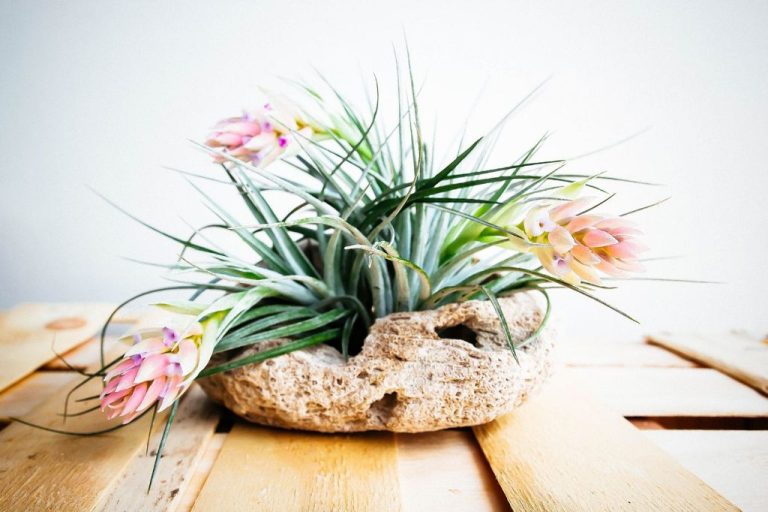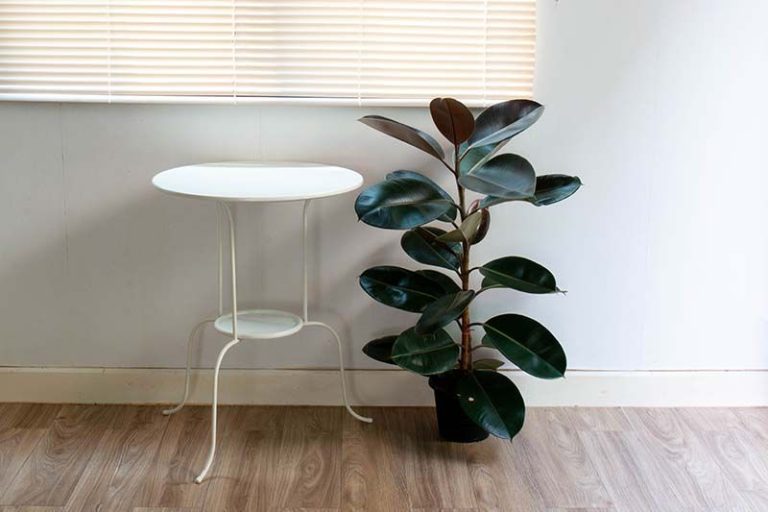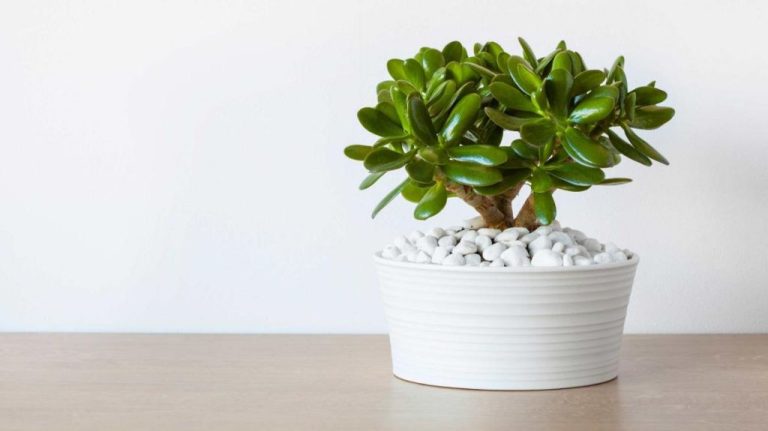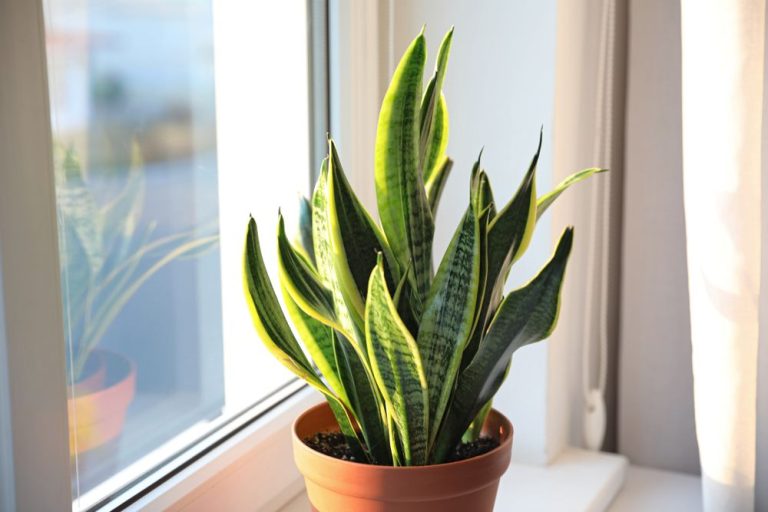The Ultimate Guide To Caring For Spider Plants
Spider plants (Chlorophytum comosum) are one of the most popular houseplants and can be traced back to South Africa, their native habitat. The spider plant was likely introduced to Europe in the 18th century [1]. It gets its common name from the spider-like appearance of its offsets or “spiderettes” that dangle down from the mother plant on thin stems. The spider plant has long, strap-shaped leaves that emanate from a central rosette, resembling an explosion of green fireworks. What makes the spider plant so popular as a houseplant is its easy care and ability to thrive in most indoor conditions. Spider plants are tolerant of a wide range of temperatures and humidity levels. They also do well in low light conditions making them an ideal plant for beginners and busy folks who tend to neglect their houseplants.
Spider Plant Benefits
There are many benefits to having a spider plant in your home, which explains why they are such popular houseplants. Some of the most notable benefits include:
Air Purification
One of the best things about spider plants is that they help purify indoor air. The spider plant breaks down and absorbs toxins like carbon monoxide, xylene, and formaldehyde [1]. The spider plant absorbs these pollutants through the leaves and roots, converts them into plant food, and releases clean oxygen back into the air [2]. This makes them a great natural air purifier.
Easy to Care For
Another benefit of the spider plant is that they are extremely easy to care for. Spider plants are very low maintenance and great for beginner gardeners. They can tolerate droughts and even some neglect. Spider plants only need to be watered when the soil has dried out and given medium to bright indirect light. This makes them an ideal plant for those who tend to “forget to water” their houseplants.
Versatility
Spider plants are versatile houseplants that work in almost any indoor environment. Their long arching leaves drape beautifully out of hanging baskets. Spider plants also make great tabletop or desktop plants. They can thrive in low to bright indirect light conditions. This adaptable nature makes them suitable for offices, dorms, apartments, or anywhere that could use some extra greenery.
Spider Plant Varieties
There are many different varieties of spider plants to choose from. Some of the most popular include:
Green Spider Plant – This is the classic spider plant with solid green leaves. It has a graceful, arched shape and is very easy to grow.
Variegated Spider Plant – The variegated variety has leaves that are striped with white, yellow or cream. This gives the plant a very decorative look. Examples include the ‘Vittatum’ and ‘Zebra’ varieties.
Curly Spider Plant – These spider plants have ruffled, curled leaves rather than flat leaves. They have a very unique, eye-catching texture. Examples include the ‘Crispum’ and ‘Undulatum’ varieties.
There are also more colorful spider plants with leaves that are bright pink, red or orange when new. However, the leaves fade to green as they mature. Some popular colorful varieties are ‘Red Flash’, ‘Strawberries and Cream’ and ‘Orange Zest’.
Spider Plant Growth Requirements
To grow healthy and thriving spider plants, it’s important to provide the right conditions for them. Here are the key growth requirements for spider plants:
Light
Spider plants do best in bright, indirect light. Direct sun can scorch their leaves. Place them near an east, west, or lightly shaded south window. They can tolerate lower light conditions, but growth will be slower (Source 1).
Water
Spider plants prefer evenly moist soil. Water them when the top inch of soil feels dry. Take care not to overwater, as soggy soil can lead to root rot. Allow excess water to drain out from the pot’s drainage holes (Source 2). The leaves will start to curl if the plant needs water.
Soil
Use a well-draining potting mix for spider plants. A general houseplant soil with ingredients like peat moss, perlite, and bark works well. Make sure the soil drains freely and doesn’t hold water.
Temperature
Daytime temperatures of 65-75°F (18-24°C) and nighttime temps around 55-65°F (13-18°C) are ideal. Spider plants can tolerate a wider range, from about 50-80°F (10-27°C), but growth may slow outside that range.
Humidity
Average room humidity is fine for spider plants. Higher humidity can encourage faster growth, but is not critical. Misting the leaves occasionally can boost humidity around the plant.
How to Water Spider Plants
Spider plants thrive when the soil is allowed to slightly dry out between waterings. Water about once a week, allowing the top inch or two of soil to dry before watering again. The frequency can vary based on factors like sunlight, temperature, humidity, soil type, and pot size. Water less often in cooler weather or low light conditions.
When watering, add enough so that water drains freely from the drainage holes at the bottom of the pot. This ensures the entire root zone is hydrated. Avoid leaving the pot sitting in water for prolonged periods, as spider plants are susceptible to root rot if overwatered.
If the leaves start to curl or get brown tips, this usually signals underwatering. On the other hand, yellow leaves, mushy stems, mold growth or rotted roots indicate overwatering. Adjust your watering frequency based on the needs of your individual plant.
Sources:
https://www.thesill.com/blog/how-to-care-for-a-spider-plant
Spider Plant Soil
The best potting mix for spider plants consists of a combination of peat moss, compost, and perlite. This soil mix provides good drainage and aeration for healthy root growth. Perlite helps improve drainage and prevent soil compaction, which spider plants are susceptible to. Many gardeners recommend amending regular potting soil with perlite at a 1:1 ratio.
While most general houseplant or all-purpose potting mixes work well for spider plants, soil that is specifically formulated for cacti or succulents can also be suitable due to the extra drainage. Avoid regular garden soil or any mix that contains composted manure, as these can be too heavy. The ideal pH range for spider plant soil is 6.1-7.8.
Some specific potting mix brands recommended for spider plants include FoxFarm Ocean Forest, Miracle-Gro Indoor Potting Mix, and Miracle-Gro Cactus, Palm and Citrus Potting Mix. Always check the label to verify the mix contains peat moss and perlite before using it for your spider plant.
Spider Plant Fertilizer
Spider plants require little fertilizer but providing nutrients occasionally can help them thrive. The best fertilizer for spider plants is a balanced, water-soluble houseplant fertilizer diluted to half-strength. Look for a 20-20-20 or 10-10-10 NPK ratio fertilizer.
Fertilize spider plants every 2-4 weeks during the active growing season in spring and summer. It’s best to skip winter fertilizing, as growth slows down when days get shorter. Overfertilization can cause leaf burn or brown tips.
Organic fertilizer options like compost tea, worm castings, or fish emulsion also work well for spider plants. Always dilute organic fertilizers more than synthetic fertilizers.
When fertilizing, thoroughly water the soil first before applying diluted fertilizer. Let excess water drain out before returning the plant to its cache pot or dish.
For best results, alternate between fertilizing and regular watering. Flushing the soil occasionally will prevent buildup of salts.
With proper light and water, spider plants grow well even without fertilizer. But applying diluted fertilizer every few weeks will provide nutrients for optimal growth and vibrant leaves.
Spider Plant Light Requirements
Spider plants thrive in bright, indirect light. Ideal light levels for spider plants range from 200-800 foot candles. Direct sunlight can scorch the leaves, so it’s best to avoid placing them in direct sun (Source).
Signs that a spider plant is getting too much light include brown leaf tips and edges. If light levels are too low, you may notice slower growth and weaker stems that cause the leaves to droop. Typically, a north or east facing window provides the right amount of bright, indirect light for spider plants to flourish (Source).
Outdoors, spider plants grow best in part shade or dappled sunlight. Make sure to slowly acclimate an indoor spider plant before placing it in direct outdoor sun to avoid leaf scorch.
Spider Plant Pruning
Pruning spider plants helps promote healthy growth by removing dead, damaged, or unsightly foliage. The best time to prune spider plants is in spring before the growing season begins. However, you can prune them as needed throughout the year.
Use clean, sharp scissors or pruning shears to make smooth cuts. Always prune spider plants just above leaf nodes or where new offshoots are beginning to emerge. Make the cuts at a 45 degree angle to allow water to drain off properly.
Remove any leaf tips that are brown, yellowed, or diseased. Prune off any old leaves that are entirely discolored or withered. You can also prune away older interior leaves to keep the plant looking tidy and encourage new growth.
If your spider plant becomes overgrown or crowded, you can cut it back by as much as 1/3 to help reign it in. The plant will quickly recover and produce new leaves.
After pruning your spider plant, discard the trimmings in the trash. Avoid pruning overly often, which can stress the plant. With proper pruning once or twice annually, your spider plant will thrive for years to come.
Sources:
https://plantura.garden/uk/houseplants/spider-plant/caring-for-spider-plants
https://www.gardeningknowhow.com/houseplants/spider-plant/pruning-spider-plants.htm
Spider Plant Propagation
Propagating spider plants is easy and a great way to get more plants without spending any money! There are a few different methods you can use to propagate your spider plant and grow new babies.
The most common and easiest way is to propagate using the spider plant babies (also called spiderettes, plantlets, or offsets). Once the babies reach 2-3 inches long, you can simply detach them from the mother plant by pinching or cutting the stolon. Place the spiderette in a small pot filled with well-draining potting mix, keep it moist through the first few weeks until the roots establish. Soon you’ll have a brand new spider plant (Source).
You can also propagate a spider plant by rooting cuttings in water. Select a healthy stem on the mother plant and cut off a 4-6 inch section using clean, sharp scissors. Remove the lower leaves and place the cutting in a glass of water. Make sure 1-2 sets of leaves remain above water. Change the water weekly and you should begin to see roots in 2-3 weeks. Once roots are 1-2 inches long, plant the cutting in soil (Source).
Lastly, divide an overgrown spider plant during repotting to get 2-3 new plants. Tease apart the root ball gently with your hands, making sure each division has plenty of healthy roots. Repot each root mass in its own container with fresh potting mix. Keep them well-watered while the plants establish. Dividing a mature spider plant is a great way to rejuvenate your plant and multiply your collection.





